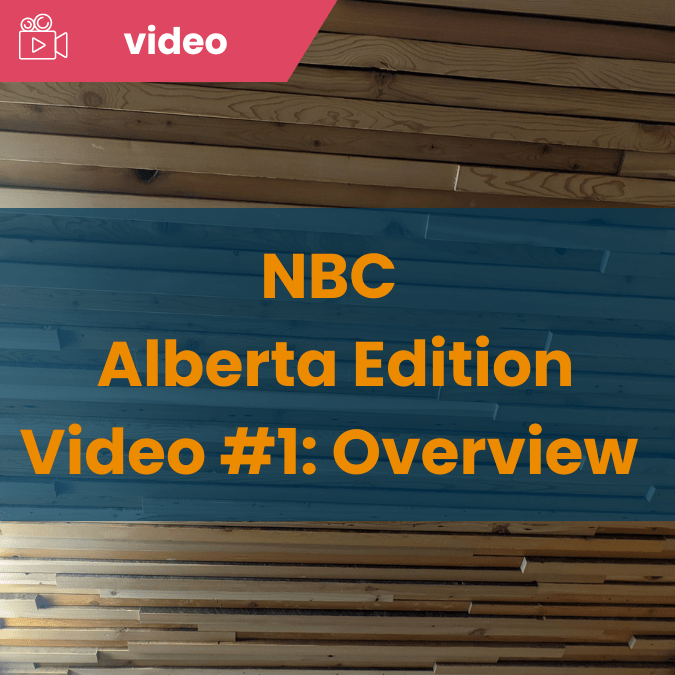Author/Contributor: BILD Alberta, PHBI, Mattamy Homes, Safety Codes Council
Alberta Context: This video is an overview of the National Building Code – Alberta Edition update, covering the process behind developing the National Model Building Code and the concept of harmonization, and outlines how to comply with Tier 1 energy code requirements.
Summary:
This video is a video guide for the Tiered Energy Section of the 2023 National Building Code – Alberta Edition and an initial overview of what industry can expect to comply with Tier 1. The video does not include other important non-energy-related code changes. The 2023 NBC-AE comes into effect on May 1, 2024.
Watch the video to get the full summary.
Video timestamps:
How are the codes created? → 1:09
- The benefits of a harmonized code
- New Tier code
Overview → 5:44
- The goal is to move towards net-zero ready (Tier 5)
Industry as a whole → 9:13
How and who is involved in code changes? → 10:02
- How to get involved
- Process for code review
- public reviews
- committee reviews
- Alberta Adoption
The Building Code → 11:40
The Roadmap to Energy Efficiency → 14:04
- Status Quo
What’s coming in the new code? → 15:02
- 9.36.6. Airtightness of Building Envelope
- 9.36.7. Tiered Energy Performance Compliance: Performance Path
- 9.36.8. Tiered Energy Performance Compliance: Prescriptive Path
Why airtightness is important. Old Vs. New → 17:26
- Focus on building envelope
Airtightness requirements in the new code → 20:40
- Tier 1 option to use 9.25 requirements or move to 9.36
Prescriptive vs Performance Path → 23:03
- New to building code – EnerGuide equivalent
- The main difference between the two is a mandatory blower door test
Energy Auditor → 27:00
- HOT2000
- Performance modeling with blower door test
- Gas-fired furnaces and domestic hot water metric
Energy Efficiency vs Emissions → 32:25
- Building code doesn’t deal with GHGs, just energy efficiency
- Energy efficiency does lead to a reduction in GHGs and carbon emissions
Peak cooling loads → 34:10
Summary → 37:27
- No big changes to insulation requirements
- Gas-fired furnaces and domestic hot water metric
- Small changes, in stages, will allow the industry to adapt
Links for Reference:
- BILD Alberta
- https://www.alberta.ca/building-codes-and-standards
- National Building Code: 2023 Alberta Edition
- National Energy Code of Canada for Buildings: 2020
- NRC Publications Archive


